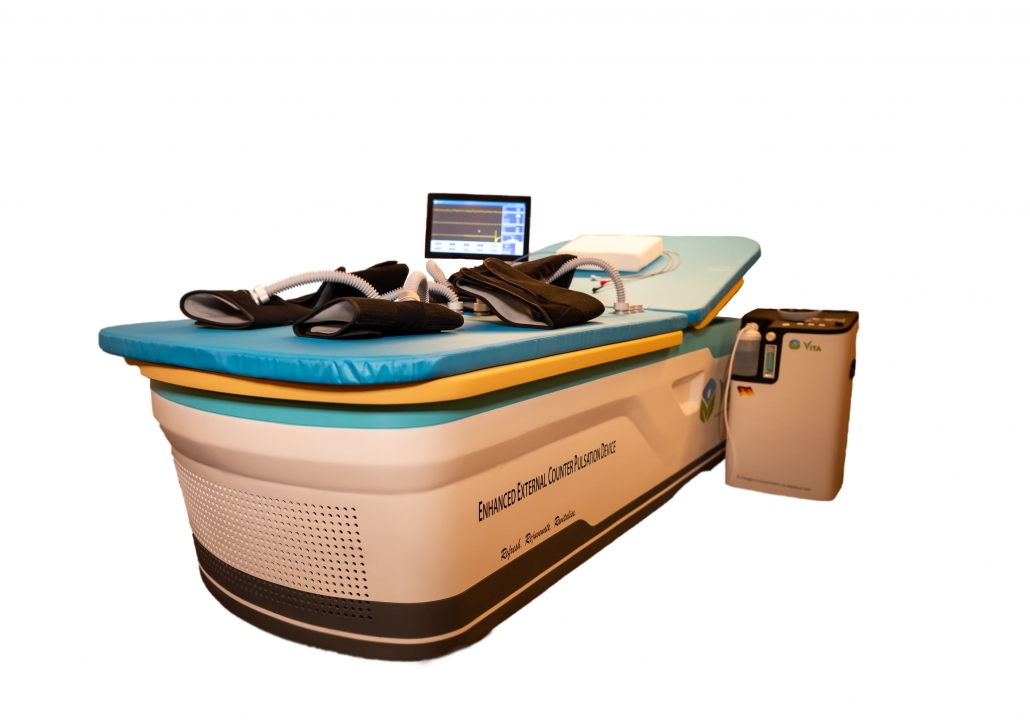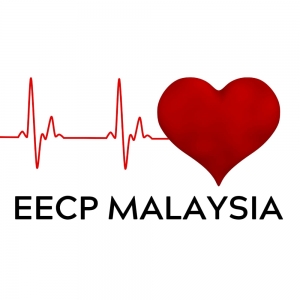Unveiling the Benefits of Hand Cuffs in EECP: A Comprehensive Comparison

Exploring the Difference and Additional Benefits of Hand Cuffs in EECP Therapy for Enhanced Cardiac Health
Enhanced External Counterpulsation (EECP) has become a highly effective non-invasive treatment for various cardiovascular conditions. Unlike traditional External Counterpulsation (ECP), EECP utilizes hand cuffs as a distinctive component. This article explores the differences between EECP with and without hand cuffs while highlighting the additional benefits that the cuffs offer.
EECP, in its basic form, employs inflatable cuffs placed around the legs, buttocks, and lower abdomen. These cuffs work in synchronization with the patient’s electrocardiogram (ECG) to deliver pressure waves that counterpulsate with the cardiac cycle. By inflating during diastole and deflating just before systole, EECP enhances blood flow to the heart, reduces workload, and improves overall cardiovascular function. This non-invasive therapy has proven effective in relieving angina symptoms, enhancing exercise tolerance, and promoting general well-being.
To further optimize the therapeutic potential of EECP, hand cuffs are introduced to the treatment process. These cuffs are positioned around the wrists and synchronized with the ECG, working alongside the leg cuffs. Incorporating hand cuffs offers several additional benefits:
a. Improved Circulatory Assistance: With hand cuffs in place, EECP provides simultaneous assistance to both the upper and lower extremities, promoting enhanced blood circulation throughout the entire body. This comprehensive approach contributes to improved oxygen delivery to vital organs and peripheral tissues.
b. Increased Diastolic Augmentation: The combination of hand cuffs and leg cuffs enhances diastolic pressure augmentation during inflation. This augmentation leads to increased coronary blood flow, improved myocardial perfusion, and enhanced oxygenation of the heart muscle.
c. Enhanced Cardiac Efficiency: Hand cuffs assist in optimizing blood flow in the upper extremities, reducing cardiac workload, and potentially improving cardiac efficiency. This benefit is particularly valuable for individuals with compromised cardiac function.
d. Comprehensive Symptom Relief: The utilization of hand cuffs in EECP therapy has shown promise in providing additional relief for symptoms such as chest discomfort, shortness of breath, and fatigue associated with cardiovascular conditions. This comprehensive approach addresses a broader range of symptoms, thereby enhancing overall therapeutic outcomes.
By incorporating hand cuffs into EECP therapy, a more comprehensive and personalized treatment approach can be achieved. Simultaneously targeting both the upper and lower extremities allows the cuffs to optimize blood flow, enhance oxygenation, and reduce cardiac workload, ultimately leading to improved cardiovascular health outcomes.
Conclusion: Exploring the Added Benefits of Hand Cuffs in EECP Therapy for Enhanced Cardiac Health
Integrating hand cuffs into Enhanced External Counterpulsation (EECP) therapy offers valuable advantages that optimize cardiovascular treatment. By simultaneously assisting blood flow in both the upper and lower extremities, hand cuffs enhance circulatory assistance, increase diastolic augmentation, promote cardiac efficiency, and provide comprehensive relief from cardiovascular symptoms. This personalized and all-encompassing approach improves oxygen delivery, reduces cardiac workload, and effectively addresses a wider range of cardiovascular issues. The inclusion of hand cuffs in EECP therapy enhances its therapeutic potential, making it a valuable non-invasive option for individuals seeking to improve their cardiac health.


